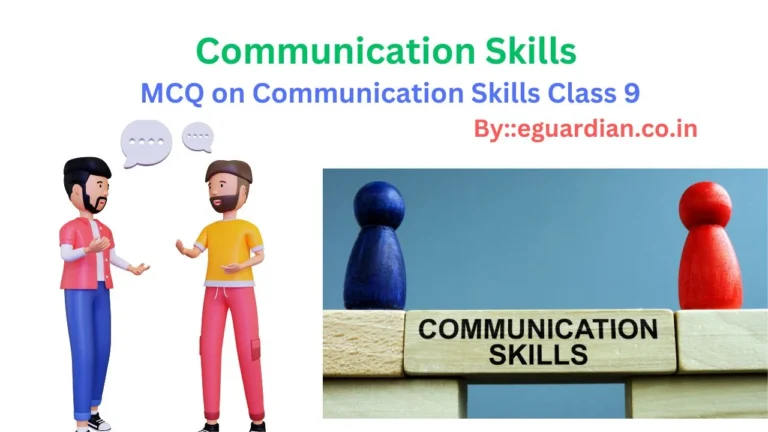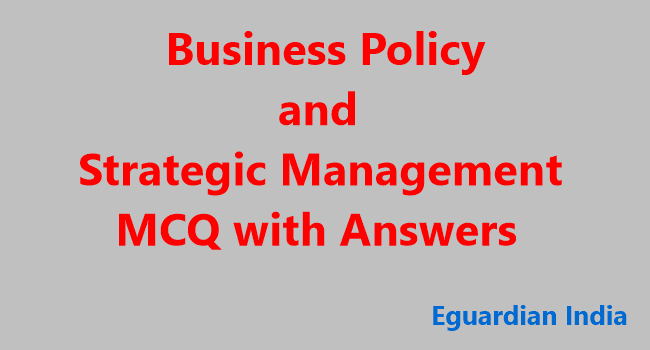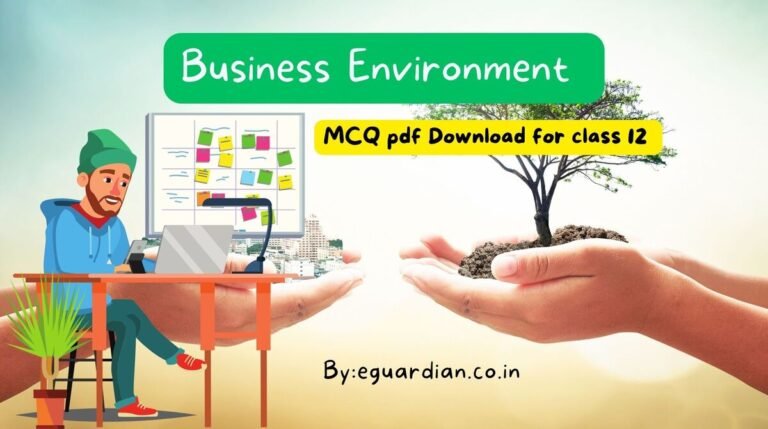Strategic Management Multiple Choice Questions and Answers pdf
Strategic management questions and answers pdf. Strategic Management Multiple Choice Questions and Answers pdf | Strategic Management MCQ with Answers pdf download for all Exams.
This article provides a comprehensive overview of strategic management multiple choice questions and answers in the form of a pdf. It covers important concepts related to strategic management, including how to effectively apply it in different business contexts.
What is Strategic Management
Strategic management is a comprehensive process that seeks to align an organization’s goals and objectives with its resources and capabilities in order to achieve sustainable success.
This involves careful analysis of the internal and external environment, identification of key drivers for growth, development of clear strategic goals, and implementation of effective strategies.
At the core of strategic management is the ability to anticipate changes in the business landscape and respond proactively. This requires a deep understanding of market trends, customer needs, competitive forces, technological advancements, regulatory requirements, and other factors that may impact an organization’s performance.
By staying ahead of these trends and adapting quickly to changing circumstances, companies can position themselves for long-term success..
Strategic Management Multiple Choice Questions and Answers
1. The concept of ‘Strategic window’ was introduced by ___.
A. Michael Porter
B. Peter Drucker
C. Hamel
D. Abell
Answer: (D)
2. In what type of organization there is a greater focus on growth and development and also diversification in terms of both products and markets?
A. Multinational companies
B. Public sectors
C. Small businesses
D. Non-profit organisations
Answer: (A)
3. In what type of organizations, the focus is more on ideology, social responsibilities, and underlying values rather than revenue generation?
A. Multinational companies
B. Public sectors
C. Small businesses
D. Non-profit organisations
Answer: (D)
4. Functional strategies are sometimes called ___.
A. Process strategies
B. Corporate strategies
C. business-unit level strategies
D. Operational strategies
Answer: (D)
5. ___ is concerned with the overall purpose or objective of the organization; for example, making decisions such as mergers, acquisitions,s or going for joint ventures.
A. business-unit level strategies
B. International strategies
C. Corporate strategies
D. Operational strategies
Answer: (C)
6. The formal-structured approach of SMP is also sometimes called ___ mode.
A. execution
B. planning
C. adaptive
D. opportunistic
Answer: (B)
7. A basic advantage of the ___ approach is that it generates enough information and employs scientific tools of analysis that enable planners and decision-makers to find solutions even in complex situations.
A. formal-structured
B. adaptive
C. entrepreneurial-opportunistic
D. combination
Answer: (A)
8. The system by which business corporations are directed and controlled is called ___
A. Corporate Governance
B. Corporate Social Responsibility
C. Strategic Management
D. Organisational Planning
Answer: (A)
9. Corporate governance is primarily guided by ___.
A. Customers
B. Shareholders
C. Employees
D. Board of Directors
Answer: (B)
10. The affairs of the company are directed and controlled through the ___ who represent the shareholders of the company.
A. Board of Directors
B. Senior managers
C. Middle management
D. Managing Director and the Chief Executive Officer
Answer: (A)
11. The ___ system should clearly address the three major issues of an organization – the corporate objective, whom the organization should be serving, and finally how best to serve their interests.
A. Corporate Governance
B. Policymaking
C. Strategic
D. Planning
Answer: (A)
12. The interrelationship or interdependence between governance and strategy can be seen through ___ in the organization.
A. tasks and practices
B. a chain in the reporting system
C. structure
D. processes adopted
Answer: (B)
13. ___ is a new tool for the systematic review of strategy by board members without directly involving themselves with the management of companies.
A. Strategic review
B. Management review
C. Strategic planning
D. Strategic audit
Answer: (D)
14. In a governed corporation, the focus is not on power (i.e., not on monitoring or controlling the managers) but on ___.
A. improving decision making
B. talent retention
C. social responsibility
D. sustainability
Answer: (A)
15. Management thinkers like Peter Drucker feel that business definition should strongly focus on the ___.
A. Shareholders
B. Suppliers
C. Customers
D. Employees
Answer: (C)
16. The ___ of a company is variously called a statement of philosophy, a statement of beliefs, and a statement of purpose.
A. mission statement
B. vision statement
C. quality principles
D. policy
Answer: (A)
17. ___ involves setting goals or targets which demand stretching of the present resource base and capabilities for their fulfillment.
A. Strategic intent
B. Strategic objectives
C. Social audit
D. Strategic plan
Answer: (A)
18. ___ can be defined as the alignment of business operations with social values.
A. Corporate Governance
B. Corporate Social Responsibility
C. Business policy
D. Sustainability
Answer: (B)
19. ___ evaluates or measures a company’s performance against planned or laid down social objectives or goals.
A. Social audit
B. Strategic intent
C. Strategic audit
D. Strategic review
Answer: (A)
20. ___ of a company is one of its special or unique competence which gives that company a clear competitive advantage over its competitors.
A. Distinctive competence
B. Core competence
C. Strategic competence
D. Threshold competence
Answer: (B)
21. Xerox’s competence in photocopying and Canon’s competence in optics, imaging, and laser control are examples of ___ competence.
A. Strategic
B. Threshold
C. Distinctive
D. Core
Answer: (D)
22. ___ is the unique capability that helps an organization in capitalizing upon a particular opportunity.
A. Core competence
B. Distinctive competence
C. Strategic competence
D. Threshold competence
Answer: (B)
23. Various competencies and resources of an organization can be integrated into a chain of activities that an organization performs to meet customer demand. This is called ___.
A. value chain
B. product life cycle
C. innovation
D. business process
Answer: (A)
24. In order to secure or sustain competitive advantage, ___ may have to be continuously developed and adjusted to competence levels.
A. skills
B. talent
C. resources
D. equipment
Answer: (C)
25. In order to improve the competitive position, companies are adopting ___, that is, moving one or more of the functions in the value chain outside.
A. strategic outsourcing
B. Business process re-engineering
C. Corporate restructuring
D. subcontracting
Answer: (A)
26. The national income, the manufacturing and service sector, capital or financial sector, investment, savings, etc., constitute the ___ environment.
A. Economic
B. Sociological
C. Micro
D. political
Answer: (A)
27. Prevailing tendencies, course of action, or events taking place over time like movements in national income, inflationary tendencies, growth in industrial production, etc., are known as ___.
A. Patterns
B. macro activities
C. Trends
D. fluctuations
Answer: (C)
28. A ___ is a detailed and probable view of how the business environment of an organization may develop in the future based on the analysis of key environmental influences and factors of change about which there is a high degree of uncertainty.
A. Scenario
B. Vision
C. Mission
D. Policy
Answer: (A)
29. In addition to environmental analysis, organizations need to assess their internal strengths and weaknesses. This is done through ___.
A. SWOT analysis
B. Scenario building
C. PEST analysis
D. Benchmarking
Answer: (A)
30. The focus of ___ is on developing and maintaining a competitive advantage consistent with present resources and market requirements.
A. dynamic strategy
B. stability strategy
C. competitive strategy
D. generic strategy
Answer: (B)
31. In the BCG model, ‘BCG’ stands for ___.
A. Boston Consulting Group
B. Business Communication Group
C. Business Consulting Group
D. Benchmark Consulting Group
Answer: (A)
32. The BCG model is also known as ___.
A. Johari Window
B. evaluation matrix
C. Generic strategy model
D. portfolio matrix
Answer: (D)
33. In Michael Porter’s theory, the four generic strategic options available to companies are cost leadership, focused cost leadership, differentiation and ___.
A. diversification
B. focused differentiation
C. uniqueness
D. mass customization
Answer: (B)
34. Porter’s theory is based on the concepts of ___ and mass marketing and product proposition to be offered by different companies.
A. niche marketing
B. differentiated marketing
C. customized marketing
D. innovation
Answer: (A)
35. The manner in which the corporate headquarters manages and nurtures individual businesses or SBUs is called ___.
A. Corporate parenting
B. Management nurturing
C. Corporate cultivation
D. Corporate education
Answer: (A)
36. ___ businesses fit well with parenting characteristics but do not provide enough opportunities to the parent for improvement.
A. Value trap
B. Ballast
C. Heartland businesses
D. Alien territory
Answer: (B)
37. To ascertain the acceptability and commercial viability of a new product, it is necessary to conduct ___ before launching the product.
A. User Acceptability test
B. test marketing
C. pilot study
D. survey
Answer: (B)
38. Market development for existing products can take place in two ways: first is through geographic expansion in the existing market segments and second is through ___.
A. coming up with new features for existing products
B. new marketing techniques
C. developing new market segments
D. more advertisements
Answer: (C)
39. The kind of diversification in which new business has commonalities with the core business or core competence of the company is called ___.
A. Related diversification
B. unrelated diversification
C. concentric diversification
D. conglomerate diversification
Answer: (A)
40. ___ is less related to the present business and skills and resources (except financial) and may mean venturing into an entirely new area.
A. Related diversification
B. Unrelated diversification
C. concentric diversification
D. conglomerate diversification
Answer: (B)
41. ___ is defined as cooperation between two or more organizations with a common objective, shared control, and contributions (in terms of resources, skills, and capabilities) by the partners for mutual benefits.
A. Strategic alliance
B. Joint venture
C. Merger
D. Acquisitions
Answer: (A)
42. A ___ may be defined as a business venture in which two or more independent companies join together, contribute to equity capital in equal or agreed on proportion, and establish a new company.
A. Strategic alliance
B. Joint venture
C. Merger
D. Acquisitions
Answer: (B)
43. The basic objective behind all strategic alliances is to ___.
A. secure competitive advantage in the market
B. increase sales
C. increase market share
D. improve operational processes
Answer: (A)
44. ___ is a type of merger that takes place when there is a combination of two or more companies in the same business or product group or product.
A. Vertical merger
B. Horizontal merger
C. Synergic merger
D. Concentric merger
Answer: (B)
45. ___ is a type of merger that takes place when there is a combination of two or more companies that are NOT in the same business but in related businesses or products.
A. Horizontal merger
B. Vertical merger
C. Synergic merger
D. Concentric merger
Answer: (B)
46. ___ takes place when a company enters into a downstream activity with respect to the same product line/ flow – for example, a garment manufacturer starts its own retail chain.
A. Backward integration
B. Horizontal integration
C. Acquisition
D. Forward integration
Answer: (D)
47. ___ takes place when a company acquires a competing business or when two or more companies in competing businesses merge.
A. Forward integration
B. Joint venture
C. Horizontal integration
D. Vertical integration
Answer: (C)
48. A ___ is characterized by the existence of a large number of small and medium units and no single company has any significant market share.
A. Emerging industry
B. Mature industry
C. Declining industry
D. Fragmented industry
Answer: (D)
49. A ___ is one that has passed through the transition from a period of fast growth to more modest or stable growth.
A. Fragmented industry
B. Emerging industry
C. Mature industry
D. Declining industry
Answer: (C)
50. The competitive threat model or the five forces model was developed by ___.
A. Michael E Porter
B. Hamel
C. C K Prahlad
D. Peter Drucker
Answer: (A)
Conclusion
Strategic management multiple choice questions and answers pdf provides a great learning resource for both students and professionals alike.
It is an invaluable aid to help prepare for exams, job interviews, or everyday tasks. The material presented in this document can help ensure that readers have a complete understanding of the topics related to strategic management.
Thanks for visiting our website, If you like the post on Strategic Management Multiple Choice Questions and Answers pdf please share it on social media.
Read More:







Loved it. Really helpful for people like me competing for strategic management pg courses.